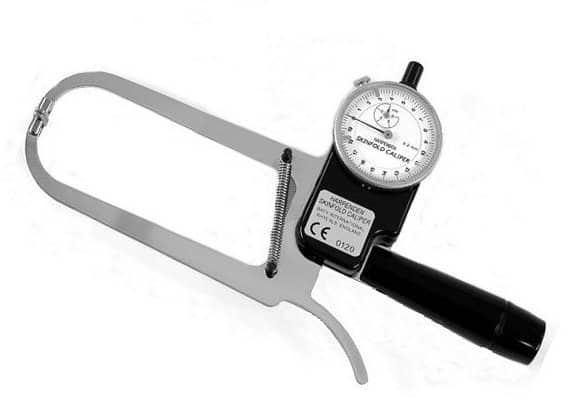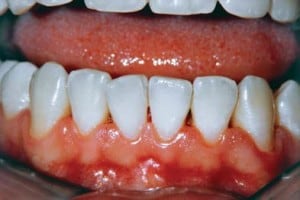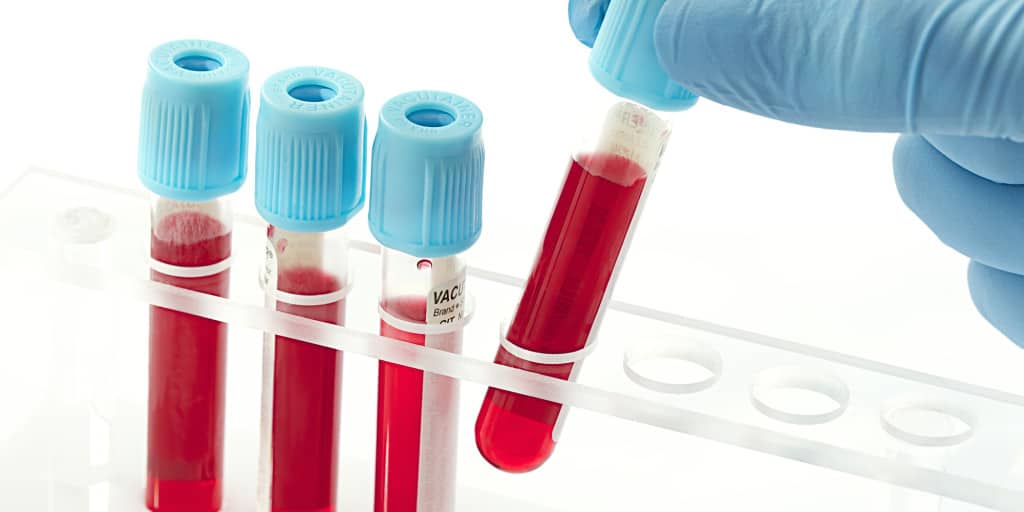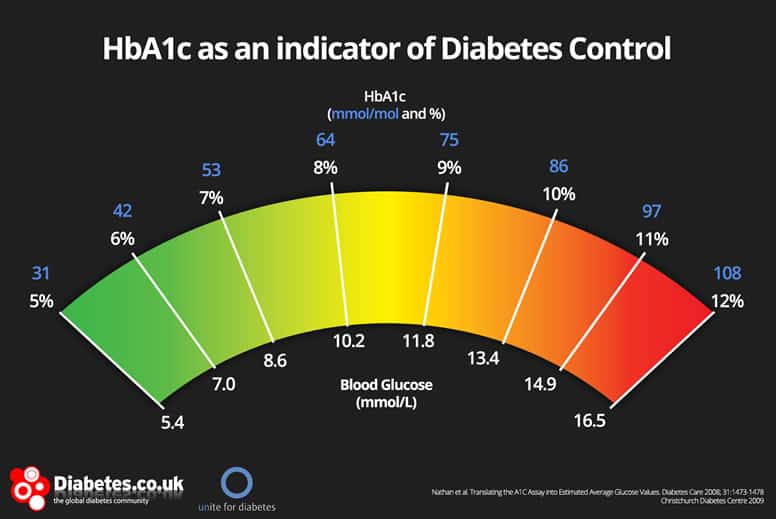Introduction
I often work with functional medicine doctors to help find out more about a client’s health history. This is a field of medicine that looks at the body as a whole being. Rather than a collection of separate “systems”.
This is an excellent way to approach a health problem. And in my experience, gives far better outcomes for chronic, lifestyle-related diseases. Rather than trying to visit multiple specialists who may not consider the relationships between the different systems in your body.
In the field of functional medicine, there are dozens of possible tests you can do. Ranging from food intolerance to energy metabolism, to detoxification and many more. Going through multiple different lab tests is not the aim of this section.
Rather I will try to give you a few tips about what you can learn from very common, basic tests that almost everyone has access to at low cost. And what you can do about any “bad scores” that you find.
Tip #37 – Get your body fat tested
Simply put, there are no advantages to carrying excess body fat. And there are plenty of advantages to staying within a healthy weight range. The idea that only weight and height are important is really outdated and incomplete. Body fat percentage matters a lot also.
Every ailment that plagues us as we approach and pass the age of 40 – cardiovascular conditions, diabetes, joint pain, brain health and more – is made worse by obesity.
You also face increased risk of multiple forms of cancer – kidney, thyroid, pancreatic, gallbladder and even breast cancer after menopause – as body fat increases.
But what exactly is a good body fat range, and how do we go about testing it?
A good target body fat range which you can maintain for life, no matter your age, is about 10-14 percent for men and 17-20 percent for women.
As for testing methods, I don’t like to use simple scales and hand-held devices because they can have large variances in their readings. The electrical methods that they use will show different readings depending on the amount of water currently in your body.
Depending on what you’ve had to drink or eat, whether you’re sitting or standing, where you are in your menstrual cycle and how much you’ve been sweating, the
accuracy of these devices can be plus or minus 7 percent. That is too much to know whether you are truly progressing or not.
If you are actually at 15 percent body fat, you might measure as high as 22 percent (quite fat for a male) or as low as 8 percent (outstandingly lean).
Instead, the simplest and best DIY method is to track the trend of your waistline measurement versus your hip measurement.
- The waist measurement is done at the level of the belly button.
- The hip measurement is done at the widest point of your hips.
- Keep the measuring tape parallel to the ground.
- Do your measurements at the same time of the day. The best time is in the morning after your initial trip to the bathroom to clear your bowels.
If your waist-to-hip ratio is improving, you are on the right track.
Look at the chart below for the norms for health.

The next option is to get a well-trained professional to do a good measurement with calipers. Here are a few ways to tell if that person knows what they are doing.
- They use a good set of calipers. The ones that can be trusted look like the picture below. Almost every medical study in the world uses the Harpenden model of skinfold calipers. If they are made of white plastic or look like they came as a free gift from a Happy Meal, that is not a good sign.

- They get a lot of practice. Every day if possible. Measurement of body fat is a skill, just like playing a musical instrument. Daily practice leads to consistency and accuracy.
- They use a good formula that takes readings from many body parts. A seven-site formula is a minimum. The one that we like to use has twelve measurement sites.
- They use a firm grip when pinching your skin and fat. Teaching correct body fat measurement technique is part of the skills taught at Genesis Academy. When teaching new personal trainers, I have found that many of them are afraid of causing discomfort for clients with a firm grip. But in my opinion, a consistent, accurate reading is worth a few seconds of mild discomfort.
The aim of taking body fat readings once every few weeks is to help you keep track of progress. After all, “you can’t manage what you can’t measure,” and body fat is a good indicator as to whether your overall health and fitness are going in the right direction.
Tip #38 – Get your blood pressure checked
There is a saying in the medical community that “you can tell the age of a man by the age of his arteries.”So protecting your arteries from the damage of high blood pressure is a very important thing to do.
High blood pressure is a good indicator of future chronic diseases like heart failure, kidney failure and premature loss of vision.
But it is also known as the “silent killer” because it shows no obvious early symptoms. Here are the categories for blood pressure.
- Ideal blood pressure: 110/70
- Normal blood pressure: 120/80
- Pre-hypertension: 120-139/80-89
- Stage 1 hypertension: 140-159/90-99
- Stage 2 hypertension: 160+/100+
High blood pressure is damaging because it means that your heart is working extra hard all the time. And when it pumps blood, the blood is rushing out through your arteries faster and harder than it should.
It’s like turning on a powerful tap (your heart) to full power. The fast-moving water (or blood) puts extra pressure on the hose attached to the tap, increasing the stress and damage to the hose (the sensitive lining of your arteries).
The lining of your arteries is responsible for hormones, antioxidant defense and other substances which help manage blood pressure. All of these are thus affected by artery damage.
The damage also hardens the arteries and makes them even smaller, further increasing blood pressure!
These factors result in an increase in the risk of stroke and heart attacks.
A regular check with a doctor or even a home blood pressure meter is a good way to know if high blood pressure is a problem for you. I like the home kits because of their convenience. Below is a video demonstrating the correct procedure for measuring your blood pressure.
Here’s how to get an accurate reading:
- Don’t exercise or eat for at least 30 minutes before taking the reading.
- Take it at the same time of the day, preferably first thing in the morning.
- Wear loose clothing, especially on your upper body. Tight clothes can give excessively high readings.
- Keep the elbow at the level of your heart. A lower position tends to make readings higher.
- Take three readings with a minute rest between each, and average them out.
Things you can do to improve your blood pressure readings if they are high include:
- Manage stress (Tip #36).
- Increase magnesium and potassium intake (Tip #19).
- Increase vitamin C (find a buffered vitamin C supplement to help reduce digestive discomfort). Most studies average 500mg per day for 12 weeks, so that’s a good start.
- Increase omega-3 intake (Tip #11). A good start is 6g a day if you have high blood pressure.
- Consider incorporating principles of the DASH (Dietary Approach to Stop Hypertension) diet into your lifestyle. Actually, if you are following the tips in the nutrition section of this guide, you are not far from the DASH diet. The only thing that you may want to change is to reduce your carbohydrate intake if you are not that active, and to replace it with more protein to maintain lean muscle as you get older.
Note: Each of the supplements above will typically show a 5-10 mm Hg drop in blood pressure readings if you have high blood pressure. This is equal to many of the medical drugs out there, and with no side-effects. Give them a try first.
Tip #39 – Make sure your teeth and gums are healthy
As you get older, don’t forget to take care of your teeth and gums. Besides the more well-known problems of tooth decay and gum disease, there is another issue that many people are not aware of
Dental focal infection.
This simply means that the localized site of an unhealthy tooth or gum can spread the toxins or microorganisms to other parts of the body.
This used to be commonly known. But as medicine became more segmented into different body parts, and as it became even more separate from dentistry, this theory fell out of favor.

But recent research has shown that there is truth in the idea that infections in the mouth can be damaging to the rest of your body. The microorganisms which are known to cause dental infections have also been found in areas of the brain with Alzheimer’s, cancer tumors and unhealthy parts of the digestive tract.
Just like any other form of chronic infection, with dental focal infection your immune system is placed into a heightened state for too long. It is good to have an immune system response to an infection, but an overactive immune system means that many of your body’s soldiers are constantly running around with their fingers on the trigger.
And lots of guys running around with guns means more chance of “friendly fire” attacks on your own body. These autoimmune diseases come in various forms like rheumatoid arthritis, thyroid damage and adrenal gland damage.
The inflammation from dental focal infection also makes cardiovascular issues, Alzheimer’s and diabetes more likely.
If you have teeth that are cracked, have holes, or have extensive decay, they should be removed – especially if you have pain and discomfort which does not go away. Besides visiting a dental professional, one way to identify these teeth is to see whether they are different in color from those around them.
To help prevent these infections, brushing and flossing daily is a good start. Saliva also serves a natural antibacterial function – but only when you are healthy. If you eat too many refined sugars, you lose this protective function of saliva. So stick to the nutrition principles in this guide and you should be on your way to healthy saliva.
Finally, swishing a teaspoon of coconut oil in your mouth for 15 minutes a day has shown good results in medical tests for gum infections. The lauric acid in coconut oil has proven antibacterial properties.
Tip #40 – Understand a basic blood test
Almost everyone age 40 or above has taken a basic blood test. This is usually part of a company healthcare package, or a screening before your purchase health insurance.
Unfortunately, the healthcare and insurance industry processes you through the system so quickly that there is no meaningful consultation with a professional to discuss the results in detail.
And there almost certainly isn’t time to help you with solutions to the problems that may crop up.
I do not believe in living a healthy life just to pass blood tests. We should live a healthy life to fulfill our God-given potential on earth.
But if items on a test show up as far outside of the normal ranges, there may be reasons for concern.
Here are some of the most commonly tested items, what the normal ranges are, and some suggestions as to what to do if they are out of line.

Cholesterol
Cholesterol is not the bad guy. You need cholesterol to stay alive. It is part of your cell walls, your hormones and your digestive bile acids.
Current guidelines (in mg/dL) are:
Total Cholesterol:
- High: greater than 239
- Borderline high: 200-239
- Desirable: less than 200
- Target: 150-200
HDL Cholesterol:
- High-risk (men): less than 40
- High-risk (women): less than 50
- Normal (men ): 40-50
- Normal (women): 50-60
- Ideal: more than 60
LDL Cholesterol:
- Very high: greater than 189
- High: 160-189
- Borderline high: 130-159
- Slightly high: 100-129
- Normal: less than 100
- Ideal: less than 80
Not all cholesterol is made equal. There are the well-known LDL (bad) and HDL (good) types. But even more important than the types are their particle size and their level of oxidation.
There are “large particle” and “small particle” types of cholesterol. The problems come from small particle types.
Imagine the lining of your arteries as a tennis net. A small golf ball is able to pass through the net, but a large soccer ball is unable to.
The golf ball represents the dangerous, small particle type of cholesterol. These pass through the artery linings, get stuck, rot and cause damage. This rotting is called “oxidation,” and it damages the artery, leading to cardiovascular disease.
So how do you know if you have those nice big soccer balls of cholesterol particles or the golf-ball-sized ones?
There is a test called a “vertical auto profile” lipid test for particle size, though it’s not commonly available.
But another way to guess your particle size is based on the fact that high-sugar diets tend to lead to small, dangerous cholesterol particles. And a good overall indicator of excessive blood sugar is the triglyceride reading in your blood test.
Triglycerides
Triglycerides are the way body stores fat when you eat too much sugar.
So to get a good indicator of your cholesterol particle size, take a look at your HDL-to-triglyceride ratio. Ideally you should have a 1:1 ratio or better (i.e., more HDL than triglycerides). A 1:2 ratio is passable, but anything worse than 1:3 is a sign that your cholesterol particles are likely to be the small, dangerous ones.
Here are the reference ranges for triglycerides (mg/dL):
- Very high: more than 499
- High: 200-499
- Borderline high: 150-199
- Normal: less than 150
- Target: 50-100
Imagine how difficult it will be to have a 1:1 ratio if you have crazy high triglycerides.
Luckily, the things you need to do to lower your triglycerides are very similar to those you need to do to lower your total cholesterol and raise your HDL. And most of them are already covered by the other tips in this guide. I will list the research-backed methods of lowering bad cholesterol triglycerides, then refer you to the tips which cover these methods in more detail.
Lifestyle factors
- Reduce alcohol and smoking to a minimum.
- Remove processed carbohydrates and sugar.
- Manage stress levels (Tip #36).
- Get quality sleep (Tip #35).
- Remove trans fats from your diet. These are usually from vegetable oils and are found in most processed and baked goods.
- Eat enough healthy fats (Tip #11).
- Exercise (all of the “training” section).
Supplements
- Omega 3 fats: 3-6g/day (Tip #11)
- CoQ10: 30mg 3x/day or 50mg 2x/day
- Probiotics: 5-10 billion CFU 2-3x/day with food
- Plant sterols: 1.7g 1-2x/day
- Red yeast rice: 1200mg 2x/day (this supplement acts like a statin drug but with far fewer side effects)
Drugs
- Your doctor may prescribe statins to help manage your cholesterol levels. You may need to use these temporarily if your levels are in the very high range. But they do have side effects like headaches, muscle pain, nausea, weakness and elevated liver enzymes.
- If you are required to take statins, make sure you take CoQ10, vitamin D and vitamin E from a multivitamin to minimize statin side effects and the depletion of these nutrients.
High-sensitivity C-reactive protein (hs-CRP)
This test is an indicator of overall inflammation in your body. High levels indicate a higher risk of heart disease. The ranges are as follows:
- Elevated risk: greater than 2.9
- Moderate risk: 1.0-2.9
- Low risk/target range: less than 1.0
Aging is one of the risk factors for high CRP, along with illness/infections, high levels of toxicity and a diet high in processed foods. Genetics also play a role.
If you find yourself with high readings of hs-CRP, here are some supplements you can take:
- Curcumin: 250mg 2x/day (try to get a capsule which also contains piperine, which has been shown to improve the absorption of curcumin)
- Grape seed extract: 150mg 2x/day
- Green tea: 3 cups or 250mg 1-2x/day
- Magnesium: 500mg 1-2x/day in the evenings (Tip #19)
- Omega-3 fats: 3-6g/day (Tip #11)
- Vitamin C: 1000mg 1x/day (get the buffered form which has less risk of loose stools)
- Vitamin D: 4000IU/day, especially if you do not get much sunlight exposure (Tip #34)
Prostate-specific antigen (PSA)
This test is often performed for men after age 40. A sudden upward jump in its readings within a six-month period is a sign of possible prostate cancer. The reference ranges (ng/ml) are:
- High: 4.0-10
- Normal: 0.0-4.0
Some of the causes of high PSA readings include:
- Steroid use
- Frequent ejaculation
- Long-distance cycling
- Infections and diseases of the testes
- Prostate cancer
In addition to a high reading on this test, other symptoms can include:
- Increased frequency of urination
- Painful urination
- Erectile dysfunction
- Groin pain
The supplements that have been shown to improve PSA readings are:
- Saw palmetto extract: 160mg 3x/day
- Zinc: 15-30mg 1x/day (Tip #20)
HbA1c
One final test that is easy to obtain. And is especially useful if you or your family have a history of diabetes. Is called HbA1c. It is a test designed to see if your body has been damaged by high blood sugar.
It checks what percentage of your red blood cells have been damaged. Because excessive sugars in the blood can bind to the red blood cells and make them useless. This damage, called “glycation” can happen to other proteins in your body as well. The red blood cells are just used as an indicator.

6.5% is considered high risk. 6.0-6,4% is borderline high. For optimal health, it’s better to aim for 5.4% or lower.
The recommendations to lower HbA1c are similar to those to lower cholesterol and triglycerides seen above. You may also consider lowering your carbohydrate intake (tip #24) and ensuring good quality sleep and stress management (tip #35, #36). As these factors also lower blood sugar.
Get Your Free Fitness After 40 Downloads
Get your Fitness After 40 Checklist, Workout Video, And Workout Programme Here
Thanks For Downloading! Time to take action:)
